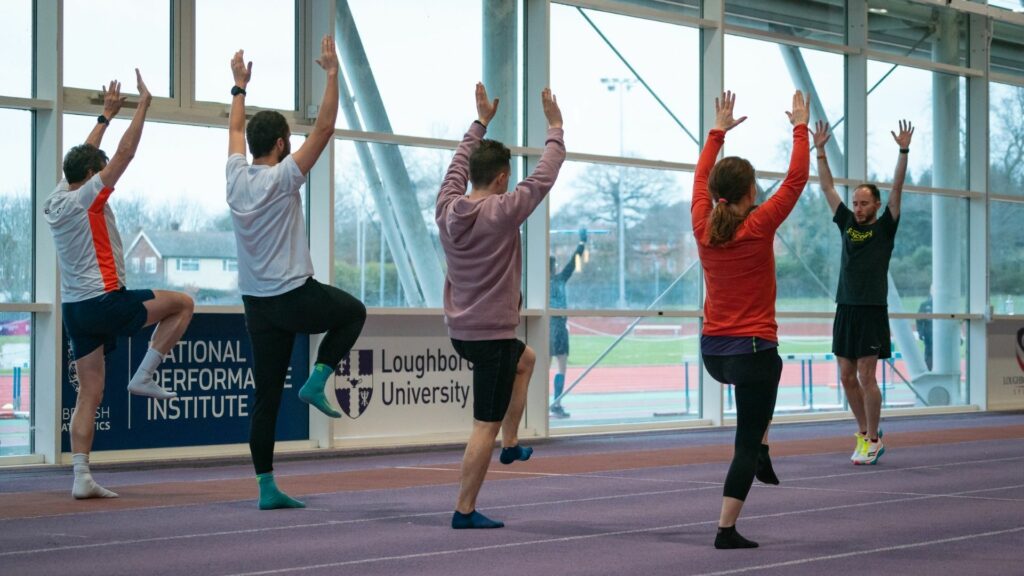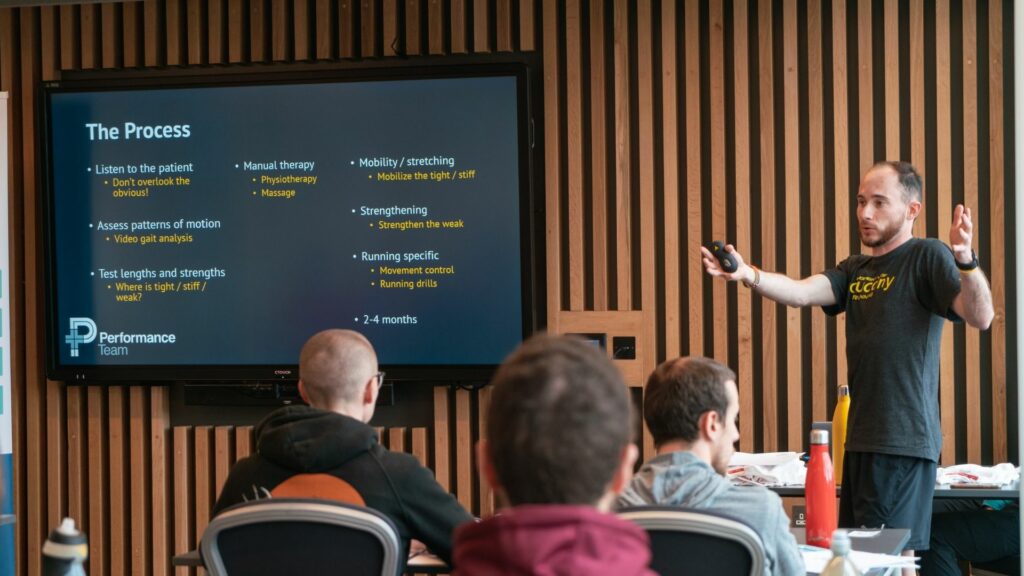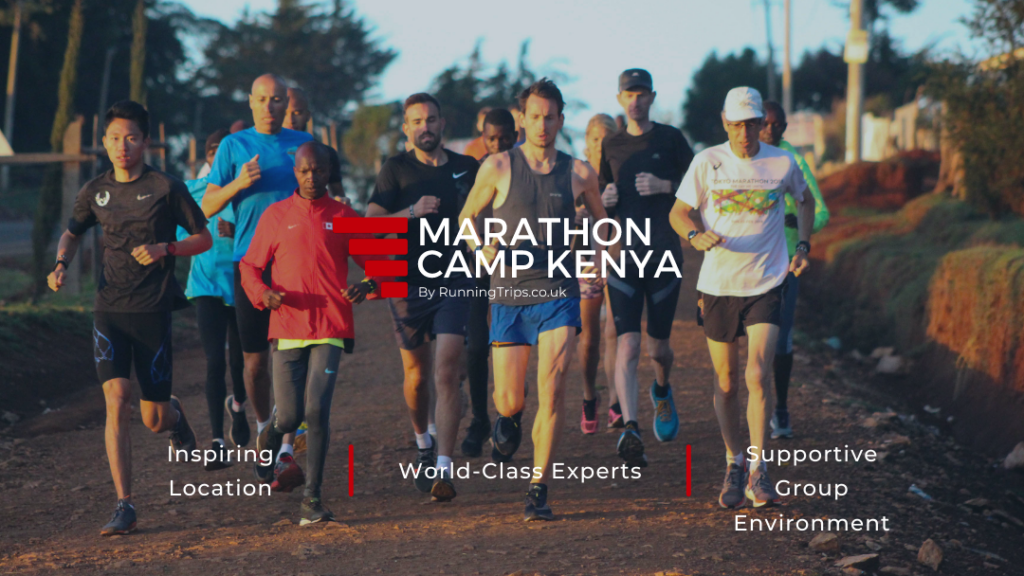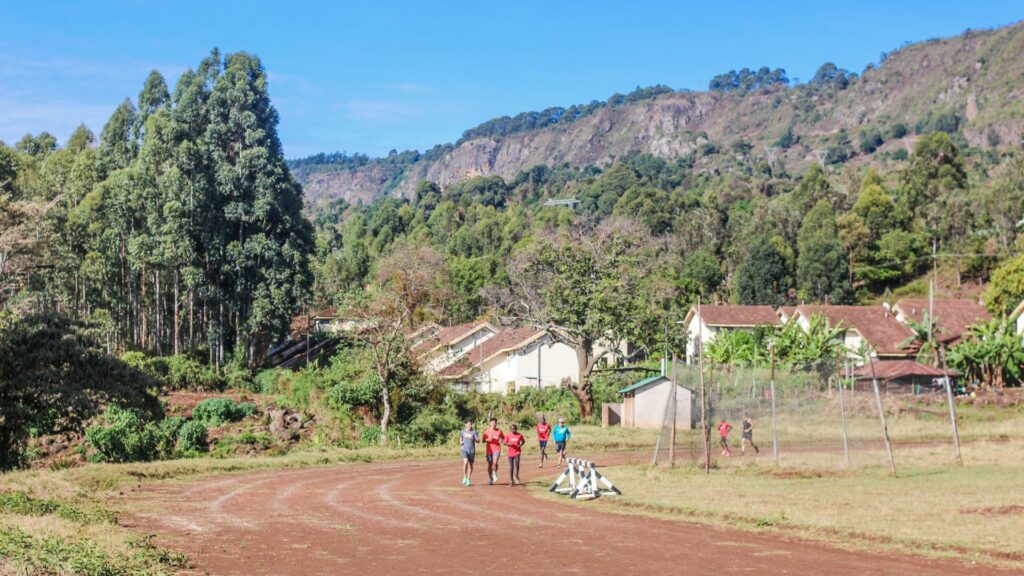
In the first of his series of articles for Running Trips, physiotherapist and elite runner Matt Bergin asks the golden question of why do runners get injured?
Matt is a sub 14minute 5k runner and physiotherapist specialising in the treatment and ongoing care of distance runners at the elite and club level. He’s the perfect person to help us understand why runners get problems, and in later articles, what we can do to mitigate the risks.
Why do runners get injured?
Runners all get injured.
“79% of runners experience at least one injury per year”1
No matter how much or how little you run. No matter how quick or slow those miles are completed. No matter whether you have regular sports massage, foam roll, stretch, or complete regular strength work, all runners experience niggles, and injuries.
It is, unfortunately, part of the package of being a runner and as much as we like to think we can completely prevent them, we simply cannot. But what we can do is reduce our chances of developing them in the first place, or the impact they have when they do, inevitably occur.
“Insanity is doing the same thing over and over and expecting different results”
– Albert Einstein
Many of the runners I see are repeat offenders. They get a problem, fix it, and then revert to the same behaviour and training patterns that caused it in the first place. Or even worse are those with chronic issues which have been ignored for months, if not years.
But Why?
As runners, we are inherently impatient, and that’s me as a runner, as well as a physiotherapist speaking. We want that quick fix, a quick massage, that bit of tape, or those off-the-shelf insoles, hoping the issue will simply go away. But unfortunately, it often doesn’t…
We get told that our Achilles injury will likely require 2-3 months of progressive loading exercises, followed by plyometric exercises, and finally incorporated into running drills. That’s before we can even start to think about progressing or even initiating some form of running. Hardly the news we wanted… However, if you’re a runner who wants to reduce your injury rate and maintain healthy spells of long term training, then you may need to listen up and consider learning some of the following important lessons.
“Training error accounts for 60-70% of all running-related injuries”2
The biggest cause of running-related injuries are errors in our training2.
The classic ‘too much too soon’. Rushing back from one injury and developing another or aggravating the same old injury. Once stuck in that cycle of injury after injury it can be incredibly hard to get out of it. This really can’t be stated forcefully enough. Just because you are no longer injured doesn’t mean you can jump back to your previous levels of training. The correct and sensible return to running program is often much more gradual and slow than most runners (and often coaches) are happy to accept. The biggest issue that we often face as runners is that our aerobic system is ready to go before our physical system – our muscles, tendons and bones. Heart and lungs wise, you feel ready to resume hard running, but the tissues are not ready for this level of impact and work.
However, some runners will have repeated recurrence of the same issue, despite having listened to their physio and coach, having diligently completed all the rehab exercises and completed a sensible progressive overload back to full training. In these cases, we must look beyond just the training errors and the area of soreness. This is where the running specialist physiotherapist comes in; someone who will prescribe more than just rest and treat beyond just the symptoms.
With most running-related injuries there often co-exists anatomical and biomechanical differences between runners3. Why? Well, how else can you explain how some runners in your training group never get injured, despite the fact they do the exact same training as you, on the same days, and at the same intensity… Not to mention that we all simply move differently, the strengths, lengths, and competencies of your tissues will dictate that we all move (and therefore run) in slightly different ways.
It is these anatomical and biomechanical characteristics, as well as nutrition, previous injury, or the less objective markers like rest, recovery, stress, and psychological well-being that will also determine our likelihood of developing injury.
As a physiotherapist specialising in running injuries and performance issues, we analyse the way you move, assess your biomechanics and your movement patterns to help determine where the areas of excessive load or stress may be, and the structures that may be vulnerable to overload, potential injury and, you guessed it, enforced rest.
Once we have determined the potential areas of overload, we can work on the root cause of the issue. Yes, having a few weeks off running may ease that soreness in the Achilles tendon but unless we resolve the reason the tendon is being overloaded in the first place it is only a matter of days or weeks before you’re probably back in to see me again wondering why it has flared up again…
The key is creating a runner with the structural integrity to withstand the demands of the training and racing they want to do! During September’s Marathon Camp with Kenya Experience in Iten we will delve into the specific strategies that runners can implement to achieve this.
In the coming articles, we will delve deeper into the common training mistakes I see as well as take a much closer look at the biomechanics of running and some of the specific strategies that I look for when assessing runners.
References
- Van Gent, R.N., Siem, D., van Middelkoop, M., Van Os, A.G., Bierma-Zeinstra, S.M.A. and Koes, B.W., 2007. Incidence and determinants of lower extremity running injuries in long distance runners: a systematic review. British journal of sports medicine, 41(8), pp.469-480.
- Renström, A.F., 1993. Mechanism, diagnosis, and treatment of running injuries. Instructional course lectures, 42, pp.225-234.
- Hreljac, A., 2004. Impact and overuse injuries in runners. Medicine and science in sports and exercise, 36(5), pp.845-849.
About the author:
Matt Bergin

Matt is a Sports Physiotherapist at Witty Pask & Buckingham and Performance Team, specialising in the treatment and physical management of endurance runners. He works alongside, and has been extensively trained by world-class physiotherapist Mark Buckingham and is a highly sought-after physio in his own right amongst both club and elite runners across the UK. Matt has a 5km personal best of 13:47 (which he has run twice!) and finished 10th at the 2017 World University Games on one of his many international appearances for Ireland.
Matt will be joining us in Kenya in September for Marathon Camp where he will lead seminars and practical sessions on the physical preparation of marathon runners. Matt will educate runners on injury prevention and biomechanical interventions for faster and reduced injury risk running.
Running Trips provide training camps for runners of all levels in Kenya and the UK.
Kenya Experience
Combine a serious training camp with a cultural immersion into the world of Kenyan Running.
Enjoy the ultimate running holiday with Kenya Experience.
NEW FOR SEPTEMBER 2022 – Marathon Camp Kenya
Training Focus Camps
UK-based weekend Training Camps. World-Class Experts, Small Groups, High-Performance Venues.
Improve your running with Training Focus Camps.


